Most new active nutrition supplement brands make their debut with a pre-workout supplement, since pre-workouts are such industry mainstays. But with so many competing for room on the shelves, we're often left with an abundance of copycat formulas, gimmicks, or products that try to do too much at an overwhelming cost.
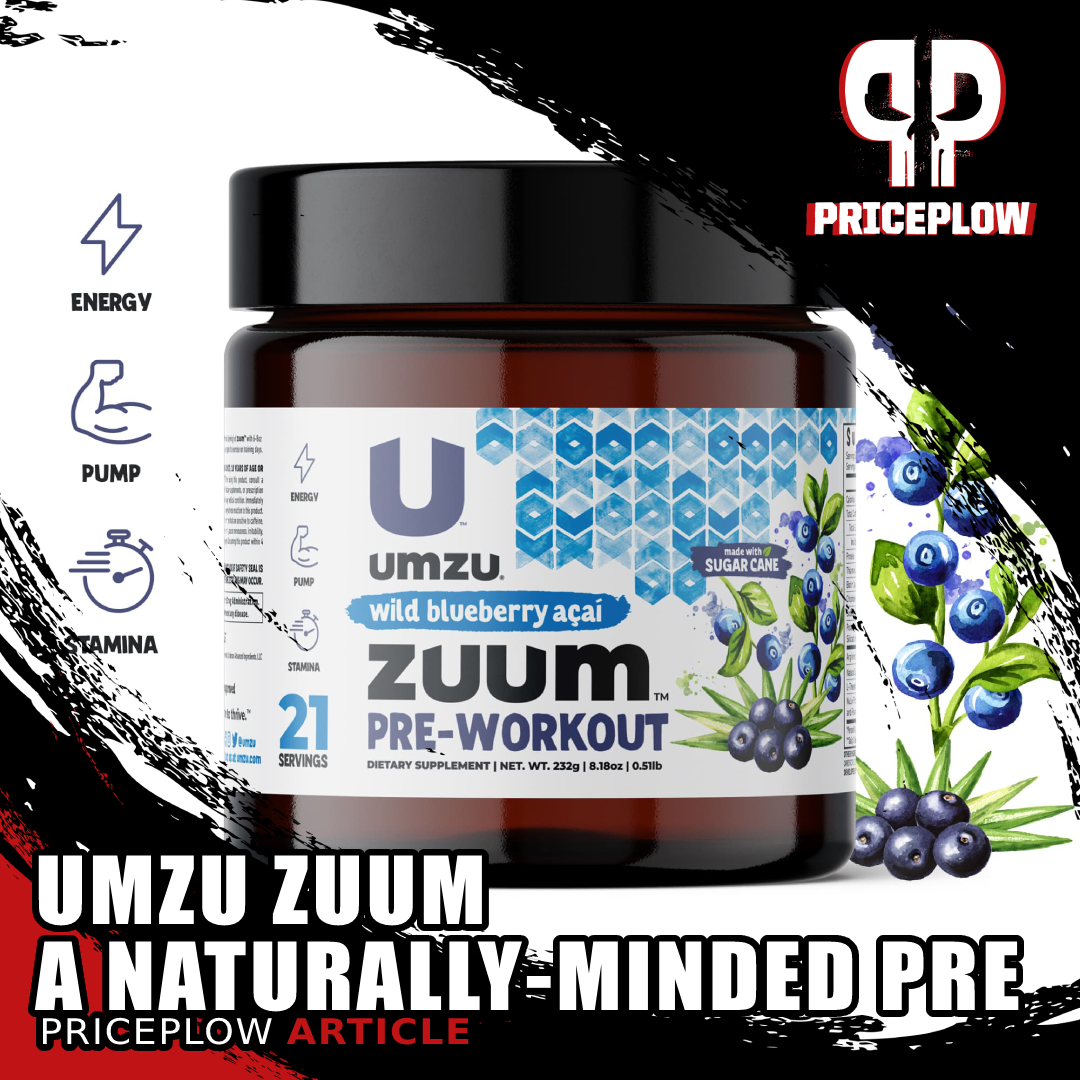
UMZU Zuum is a naturally-minded pre-workout supplement that's sweetened with cane sugar and stevia, has 150 milligrams of naturally-sourced caffeine, and a full clinical 1500mg dose of Nitrosigine!
These problems aren't the case with Umzu's Zuum Pre-Workout, an interesting, tight-knitted formula organized around Nutrition21's Nitrosigine - a patented ingredient made of inositol-stabilized arginine silicate.
With just four main ingredients, plus some B vitamins, Zuum promises to deliver consumers a focused, efficient experience. The ingredient selection shows great attention to detail on Umzu's part - with the right ingredients, you can do a lot with just a few key components.
Umzu Zuum: Naturally colored, sweetened, and caffeinated pre-workout with Nitrosigine
Additionally, many consumers have become interested in this formula because of its purity. The primary sweetener is organic sugar cane, and there aren't any weird food colorants or preservatives, either. Plus we have a modest 150 milligram dose of natural caffeine instead of synthetic, which is always a nice touch.

Move over L-arginine, Nitrosigine (inositol-stabilized arginine silicate) actually makes it work as originally desired!
We've covered Nitrosigine on this site several times, but don't always see it paired with these selections, providing a nice market gap for consumers who want to try the patented ingredient but don't want artificial sweeteners.
We'll get into a full discussion of how this works, but first, let's check the PricePlow news and deals:
UMZU Zuum Pre-Workout – Deals and Price Drop Alerts
Get Price Alerts
No spam, no scams.
Disclosure: PricePlow relies on pricing from stores with which we have a business relationship. We work hard to keep pricing current, but you may find a better offer.
Posts are sponsored in part by the retailers and/or brands listed on this page.
Umzu Zuum Ingredients
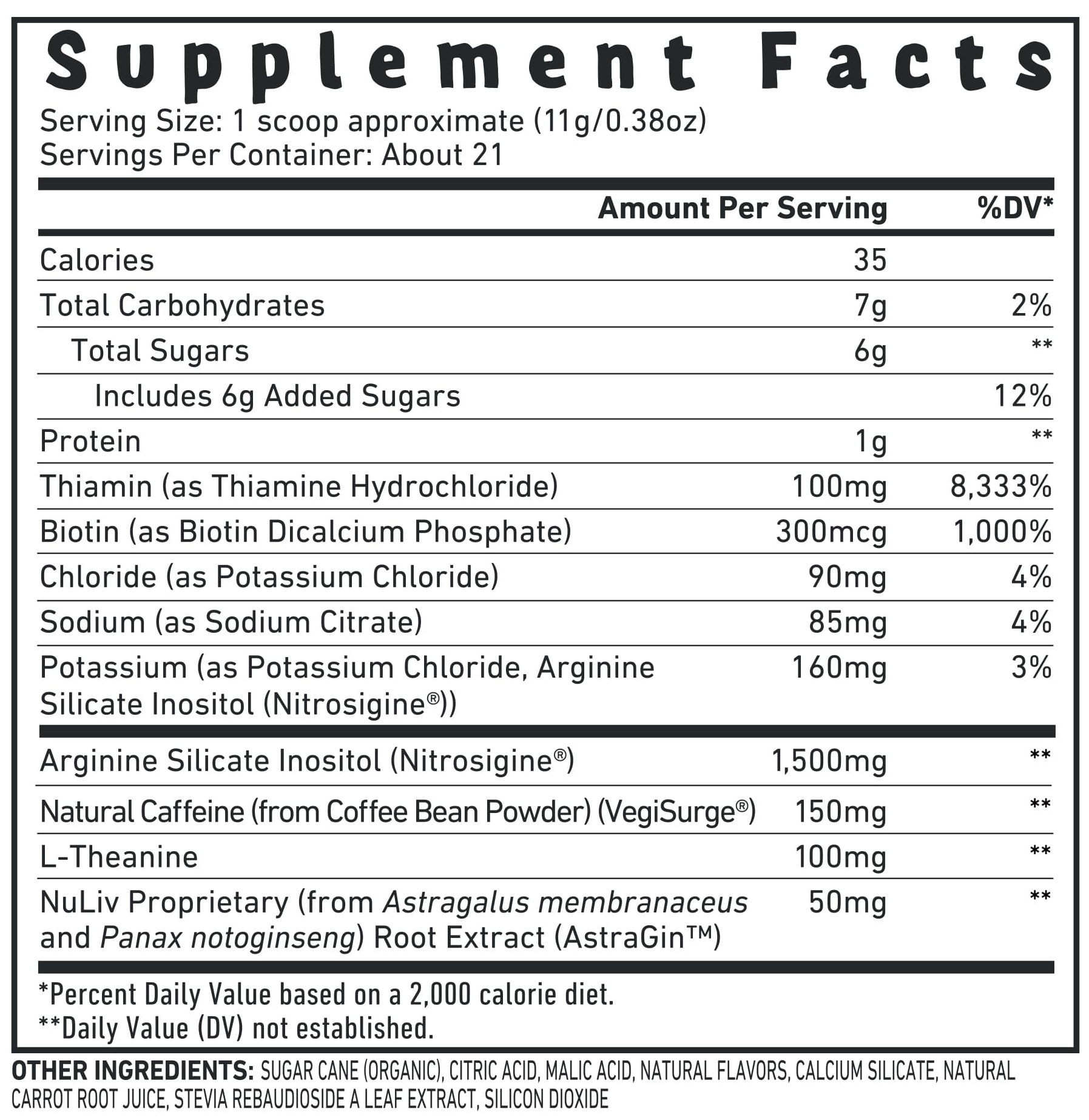
If you've been wanting to try Nitrosigine, but prefer naturally flavored and sweetened supplements, then UMZU Zuum is for you
In a single 1-scoop (11 gram) serving of Umzu Zuum Pre-Workout, you get the following:
-
Arginine Silicate Inositol (Nitrosigine) – 1,500 mg
Kicking off Umzu's Zuum Pre-Workout formula we have Nitrosigine, arguably the supplement industry's premiere nitric oxide (NO) boosting ingredient.
Why boost nitric oxide?
Nitric oxide is important because it causes vasodilation, a mechanism that leads to your arterial diameter to increase.[1] Wider arteries means better blood circulation, and with that comes a number of important benefits: namely, improved cellular waste removal, greater tissue oxygenation, more efficient nutrient delivery, reduced blood pressure, and lower heart rate. Many of these attributes are great to have in a workout setting - we're primarily targeting the benefits of increased blood flow.
Solving the Arginine bioavailability problem with Nitrosigine
Nitrosigine was designed to solve a very specific problem, which was usability of arginine as a nitric oxide booster. Arginine is the direct precursor to NO in the nitric oxide synthesis pathway, so when this was discovered, it initially made sense to supplement L-arginine in an effort to increase NO levels.
In the 2000s, the industry used L-arginine as its primary NO booster, but it became clear over time that its oral bioavailability is pretty bad.[2-5] Once a consensus emerged, the industry switched to citrulline, which is the direct precursor to arginine, leading to a "workaround".[6]
Over time, supplement formulators started running up against a problem with citrulline: you need a pretty big dose of it to get the optimal effect. Research on citrulline shows that the gains from higher doses don't start to diminish until you reach 10 or more grams per day.[7,8] That's a lot of material for users to ingest, and it also costs a lot of money to include (notwithstanding the additional flavoring and shipping costs).
It was in this context that Nutrition21 came up and patented the third generation NO-boosting amino acid: Nitrosigine.[9]
Nitrosigine is a chemical complex of arginine, inositol, and potassium silicate (often abbreviated as ASI in the research literature). The value proposition of Nitrosigine is that it significantly increases oral bioavailability of arginine, making arginine supplementation viable once again.[9]
The way it works is that the inositol and potassium silicate, through their chemical bonds with the arginine molecule, protect arginine against degradation by the enzyme arginase.[10] This process usually breaks down arginine before it can reach the intestines,[11] which is where the amino acid can actually be absorbed into your bloodstream and eventually drive NO synthesis.
Nitrosigine's athletic benefits
With a successful nitric oxide boosting ingredient, we can begin to chase the benefits that come downstream from improved blood flow. And many of them ultimately help with athletic and cognitive performance, which is why most pre-workouts contain a big dose of one NO-booster or another. Umzu wisely chose Nitrosigine for theirs.
Nitrosigine acts fast, and the effects last for a long time. Research shows that its supplementation can increase blood nitric oxide levels within 15 minutes of ingestion, and keep them elevated for up to 6 hours.[10,12]
Nitrosigine's cognitive benefits
People usually think of NO and circulation in the context of athletic performance, and that's understandable. But as it turns out, NO-mediated vasodilation can be good for your brain, too.
A nitric oxide booster that improves cognition?! Yes - Nutrition21 passed around this helpful infographic after the Nitrosigine cognition study on healthy young adults was published.[13]
This makes total sense – your brain consumes a disproportionately large share of your body's resources, including oxygen, blood, and glucose. And the brain is one place where you definitely do not want impaired cellular waste removal. It's no wonder, then, that improving cerebral blood flow through nitric oxide upregulation could improve global brain function.
Nitrosigine-specific research bears this out. For one thing, Nitrosigine supplementation has been shown to prevent the temporary cognitive impairment that typically follows an exhaustive workout.[14,15]
But the benefits aren't limited just to those who've recently exercised – one study found that even in healthy young men who hadn't completed a workout, Nitrosigine improved task-switching, which is neuroscientists' way of quantifying multitasking ability.[16,17]
Another study conducted in healthy young men and women found that Nitrosigine boosted performance on a memory test.[13]
In other words, Nitrosigine won't just help with blood flow during workouts, it can also help athletes cope with the stress of a high training load, leading to less draining post-workout feelings. This is big for those who can't afford to have their workouts ruin the rest of their day.
Nitrosigine is one of our favorite ingredients here at PricePlow, and whenever it shows up in a new formula, we like to remind readers that we've written an exhaustive review about it. You can read it at Nitrosigine: The Nitric Oxide Booster That Enhances Brain Function.
-
Natural Caffeine (from Coffee Bean Powder) (VegiSURGE) – 150 mg
We've also written about caffeine several times, but we don't often get to write about VegiSURGE, which is a naturally-sourced form of caffeine.
VegiSURGE is derived from either green coffee beans or green tea. As you can see from the Umzu's Zuum Pre-Workout label, the form used here comes from coffee bean powder.[18] VegiSURGE is standardized to contain at least 99% caffeine by weight,[18] so 150 milligrams of VegiSURGE is basically 150 milligrams of pure caffeine - a modest amount in today's climate.
Caffeine's multiple benefits: mechanisms of action
Caffeine, usually consumed in the form of brewed tea or coffee, is the most widely used (legal) psychotropic drug in the world. The vast majority of American adults use caffeine on a daily basis, and if you ask the proverbial man on the street why he reaches for that piping hot cup of Joe every morning, he'd probably say something along the lines of, "Caffeine gives me energy."
Caffeine does give us energy – but in what sense? What is energy?
Fights fatigue through adenosine inhibition
The first "energizing" mechanism of caffeine we'll discuss is adenosine antagonism. Adenosine is a nucleotide that accumulates in your brain as a metabolic byproduct during your working state. The more adenosine builds up in your brain, the more fatigue you feel.[19,20]
What caffeine does is block the adenosine receptor, meaning that although adenosine continues to build up, it doesn't have an effect on your brain, so long as caffeine remains active.
This is the primary means by which caffeine makes people feel energized – not really increasing energy, per se, but rather decreasing fatigue. We often hear this described as an illusion, but the fact is that mental and neurological states are a huge, and very real, factor in a person's capacity for doing mental and physical work.
Increases cellular energy production through phosphodiesterase inhibition
But that's not all. Caffeine can also increase cellular energy availability—a much more literal means of boosting energy—by affecting certain cellular-metabolic pathways.
Specifically, caffeine can inhibit an enzyme called phosphodiesterase, which is responsible for degrading cyclic adenosine monophosphate (cAMP).[19,20]
cAMP is a messenger molecule (sort of like a hormone) that tells your cells to burn calories for energy.[21] The higher your cAMP levels, the more calories you'll burn in a day – in other words, raising cAMP speeds up your metabolism.[21] So caffeine is particularly good at increasing the body's rate of fat burning. Supplementation has been shown to increase a person's rate of fat burning by as much as 50%.[22]
Caffeine's real-world performance benefits
So much for a theoretical discussion of caffeine's benefits: what can practical experiments tell us about caffeine's effects?
Practical experiments tell us quite a lot about the stimulant. Caffeine is actually one of the most studied supplements, renowned for its properties as an ergogenic aid capable of improving users' athletic performance, endurance, and recovery. The pro-metabolic effects that we discussed in the previous section translate into small but significant improvements in strength, stamina, and muscular power.[23]
Caffeine can also decrease reaction times,[24] enhance focus,[24,25] and improve vigilance.[25] It's also been shown to increase working memory,[26] which is key for fluid intelligence.[26] All of these work very well alongside the cognitive benefits of Nitrosigine, through a completely different pathway.
The 150-milligram dose used in Zuum is significant, but actually on the smaller side – usually we see 200 milligrams or more in pre-workouts. Still, most will feel it. But if you're a beginner and aren't sure about your caffeine-tolerance levels, start with a partial dose and work your way.
-
L-Theanine – 100 mg
The amino acid, theanine, occurs naturally in the leaves of the Camellia sinensis plant, which is colloquially known as tea. Here we mean true tea—as in green tea, black tea, or oolong tea.
Theanine acts like a neurotransmitter in the brain where it has inhibitory, as opposed to excitatory, effects on neurons. This leads to calming, anti-anxiety effects.[27-30]
Although the tranquilizing effects might make it sound like theanine is a depressant, it's not, which means you don't get the downsides typically associated with sedatives.
Theanine and caffeine have synergistic effects
The main reason we see theanine in Umzu Zuum Pre-Workout is that it synergizes well with caffeine. Research shows that when these two substances are taken in combination, as a unit they perform better for cognitive enhancement than either substance taken in isolation.[31]
This will give you a much more pleasant buzz than caffeine alone, helping you relax and to focus on correctly performing your workout.
Theanine may help with diets
Theanine has also been identified as one of several diet-friendly compounds in Camellia sinensis,[32] where, again, it works synergistically with caffeine (and catechin antioxidants) to inhibit certain blood biomarkers that are associated with excess weight gain.
Theanine drives a process called body fat browning, in which white adipose tissue (WAT) is converted to brown adipose tissue (BAT).[33] This is useful because BAT has a greater mitochondrial density and burns extra calories as heat in a process called non-shivering thermogenesis (NST).[34]
-
NuLiv Proprietary (from Astragalus membranaceus and Panax notoginseng) root extract (AstraGin) – 50 mg
AstraGin boosts the amount of adenosine triphosphate (ATP) available to intestinal cells. Since ATP is your body's energy currency, more ATP means intestinal cells can do more work absorbing nutrients that you eat and drink.
NuLiv Science's data shows that AstraGin boosts standard L-arginine absorption! Can this help with Nitrosigine? We're not sure, but given the ingredient's other gut health benefits, it's great to have either way.
The upshot is increased nutrient absorption,[35-42] which, when it comes to a supplement, means increased bioavailability for the ingredients.
The plants from which AstraGin is derived, Astragalus membranaceus and Panax notoginseng (colloquially referred to as astragalus and ginseng), have been used in traditional Chinese medicine to extend healthspan and lifespan. Although human studies on healthspan and lifespan are inherently difficult to carry out, studies in lower organisms have attested to the effects of astragalus and ginseng.[43,44]
-
Thiamin (as thiamin hydrochloride) – 100 mg (8,333% DV)
Thiamin (vitamin B-1) is one of your body's crucial cofactors for the production of adenosine triphosphate (ATP),[45] a compound whose importance we discussed in the previous section.
If your body were a car, ATP would be the gasoline – it powers everything your cells do. So, ultimately, ATP powers your whole body as well.
Thiamin is also needed for glucose metabolism,[46] and high dose thiamin supplementation has been shown to improve blood sugar control in pre-diabetic subjects.[47]
A 2013 meta-analysis of 20 different studies found that thiamin supplementation could improve cardiac function in patients with heart failure,[48] which is a good illustration of how physiological function can be improved by boosting cellular energy production.
Thiamin's athletic benefits
At least one study has found that 100 milligrams of thiamin (the same dose used in Umzu Zuum Pre-Workout) can help prevent the onset of fatigue following intense exercise.[49]
Another study found that subjects who took thiamin showed greater endurance and grip strength than placebo controls, essentially boosting their performance. Thiamin was also shown to clear lactic acid better and improve liver and muscle glycogen levels, which is good for acute recovery and long-term performance.[50]
In addition to improving lactic acid clearance, yet another study found that thiamin also clears ammonia. This is important because ammonia, like lactic acid, can cause mental and physical fatigue if it builds up too much.[51]
Thiamin can also even improve VO2max in athletes, meaning that their heart rate is lower when exercising at the same level of intensity.[52]
-
Biotin (as biotin dicalcium phosphate) – 300 mcg (1000% DV)
Biotin (vitamin B7) is most commonly used as a hair, skin, and nails supplement, but like other B vitamins, it's an important cofactor for cellular energy production, which is why it's in Umzu Zuum Pre-Workout.
Biotin is necessary for the proper function of carboxylase enzymes, which are important for mitochondrial health.[53] Here's a short list of some things the carboxylase enzymes are involved with:
- Oxidizing glucose in the liver and kidneys[53]
- Oxidizing fatty acids[53]
- Absorption and metabolism of leucine (a strongly anabolic amino acid)[53]
- Absorption and metabolism of other aminos[53]
So biotin is another ingredient that can keep your cellular metabolism optimized, which is important for peak performance, recovery, and long-term adaptation to exercise.
Flavors Available
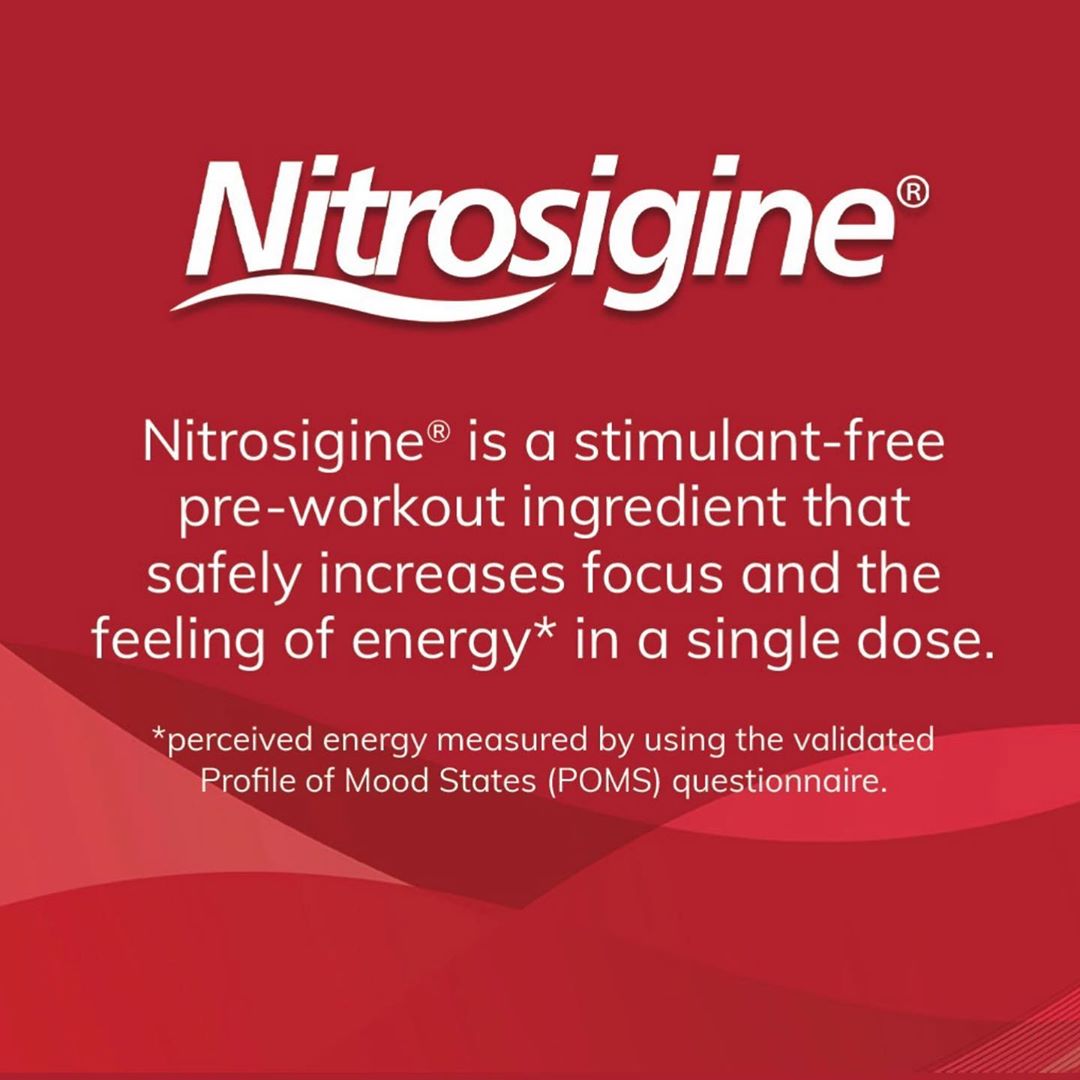
Nitrosigine is primarily found in pre-workouts due to its ability to boost nitric oxide levels... but don't forget about its cognitive-supporting capabilities!
Umzu Zuum Pre-Workout is currently available in Wild Blueberry Acai and Tiger's Blood, which usually consists of watermelon, strawberry, and coconut - although every brand flavors theirs differently.
Again, remember that Umzu is using natural colors, flavors, and sweeteners. There's real organic cane sugar inside, alongside some stevia. So while there are more carbohydrates in Zuum than most pre-workouts, we're not concerned - training time is the time to get carbs in! And you can't beat the taste of real sugar with natural flavors.
Conclusion
Umzu Zuum Pre-Workout is about as concise as a formula gets, and there's not much to criticize. Nitrosigine, the formula's centerpiece, is an awesome ingredient and can definitely boost the workout experience and perceived energy on its own, let alone the rest.
The small-ish dose of caffeine is a nice compromise at a time when consumers are increasingly demanding stimulant-free pre-workout formulas. While we're sympathetic to the anti-stimulant backlash, at PricePlow, we'd rather use a moderate dose of caffeine, like the one found in Umzu Zuum Pre-Workout, than no caffeine at all.
It's nice to see theanine included for mental energy and focus – we typically only see nootropic ingredients thrown into long pre-workout formulas as an afterthought. But we think that managing the mental side of things is key to a good workout experience.
All in all, Umzu Zuum Pre-Workout is an elegant, minimalistic approach to traditional pre-workouts and the problems classically associated with them.
UMZU Zuum Pre-Workout – Deals and Price Drop Alerts
Get Price Alerts
No spam, no scams.
Disclosure: PricePlow relies on pricing from stores with which we have a business relationship. We work hard to keep pricing current, but you may find a better offer.
Posts are sponsored in part by the retailers and/or brands listed on this page.
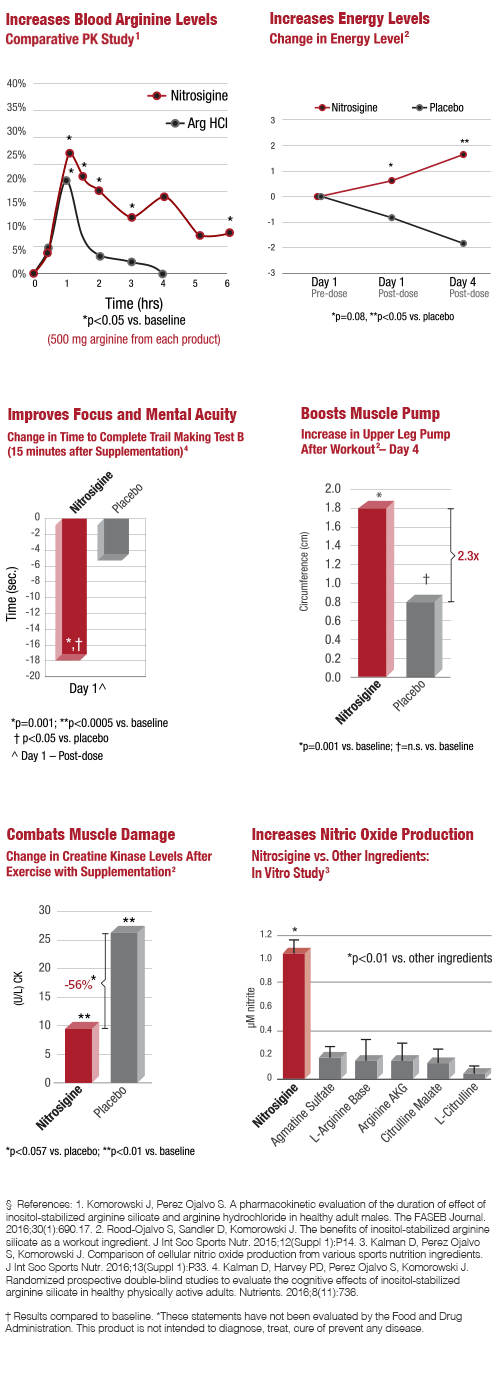
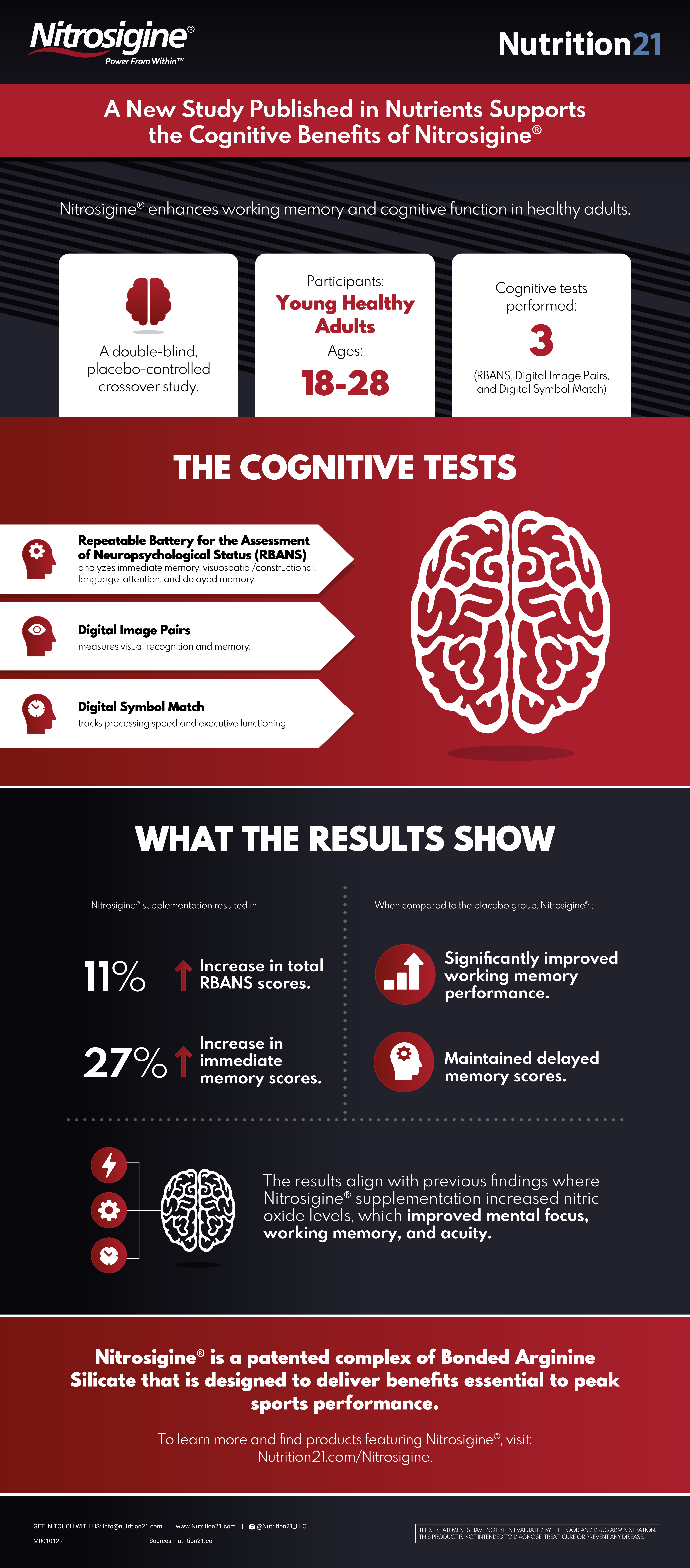
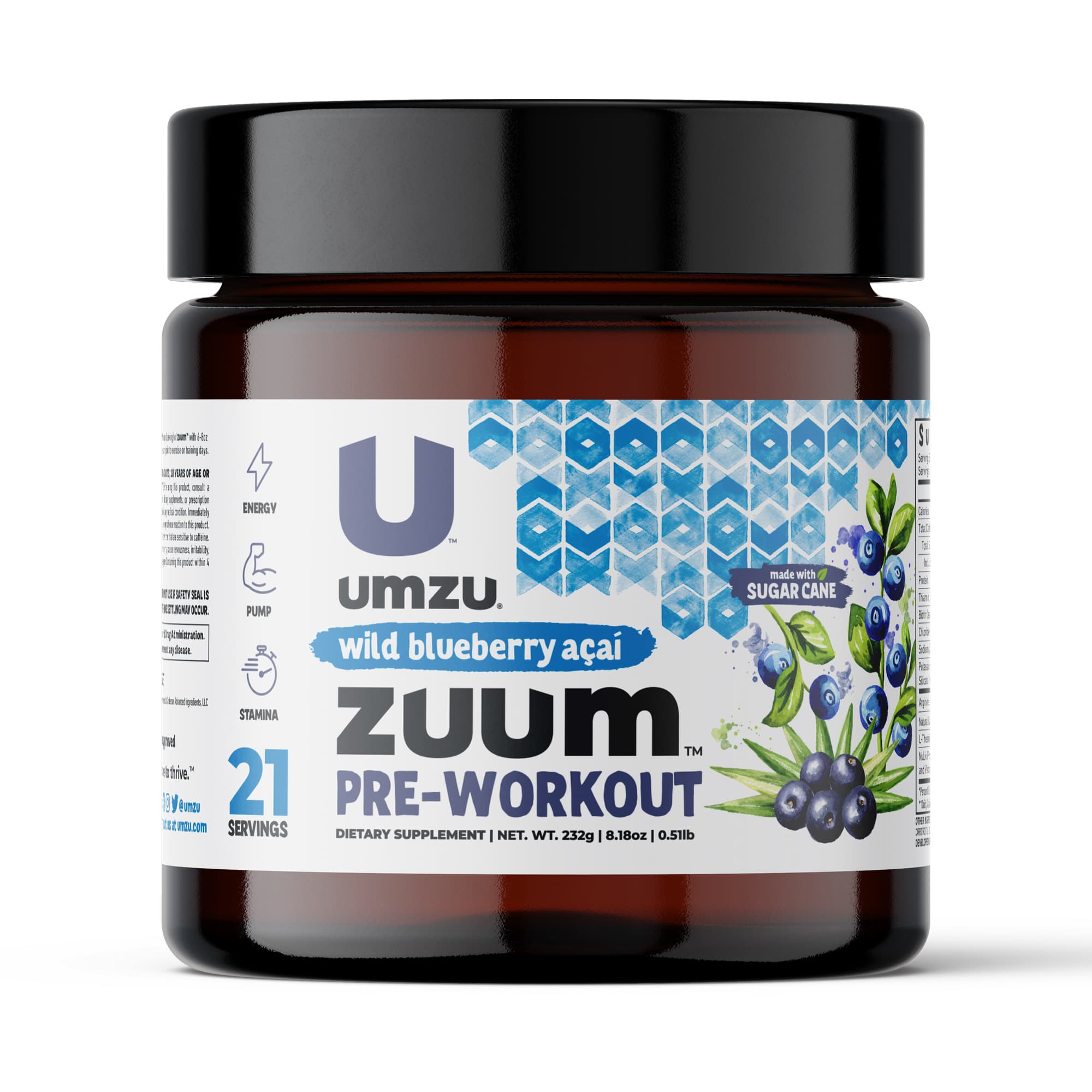
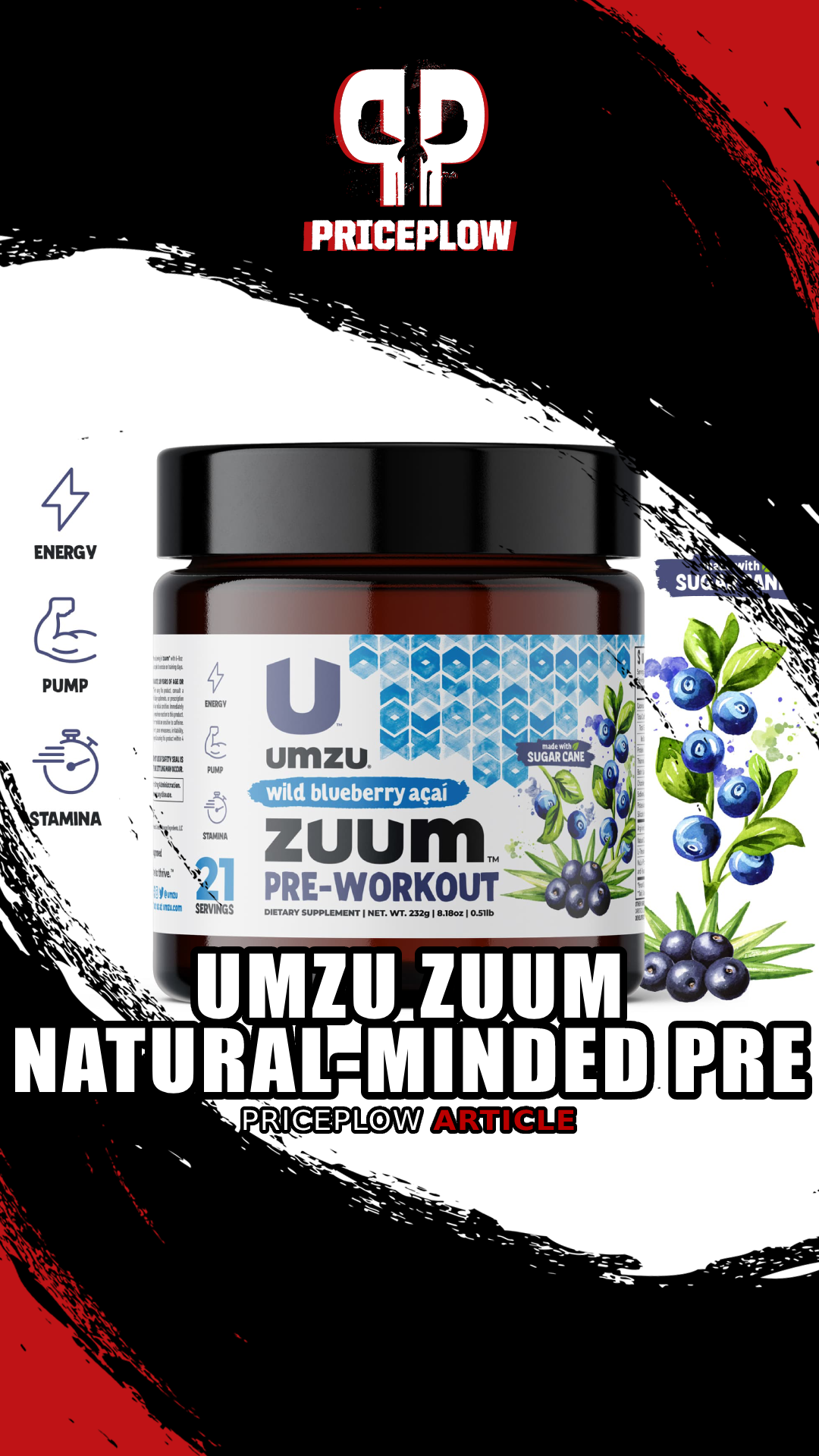
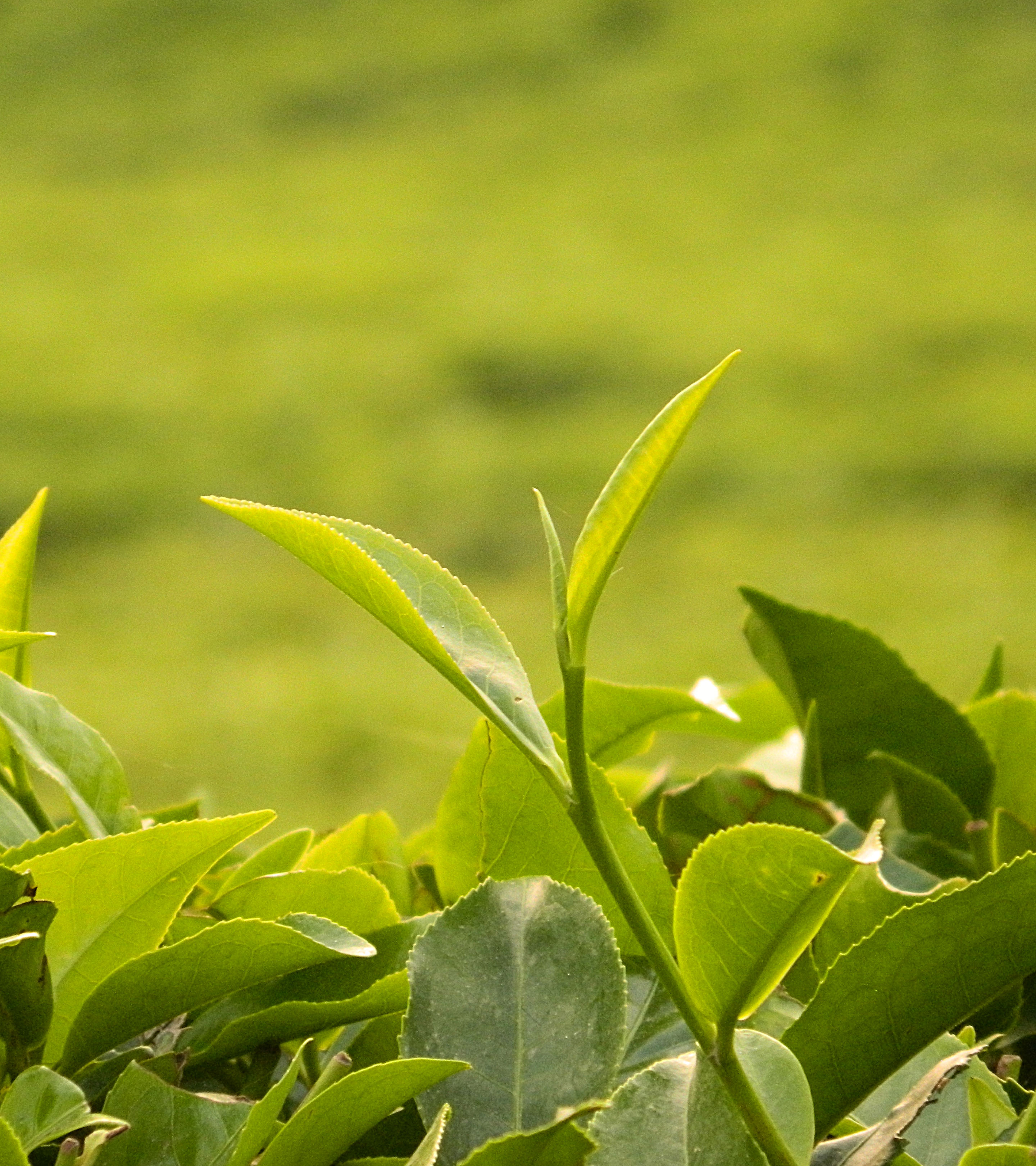
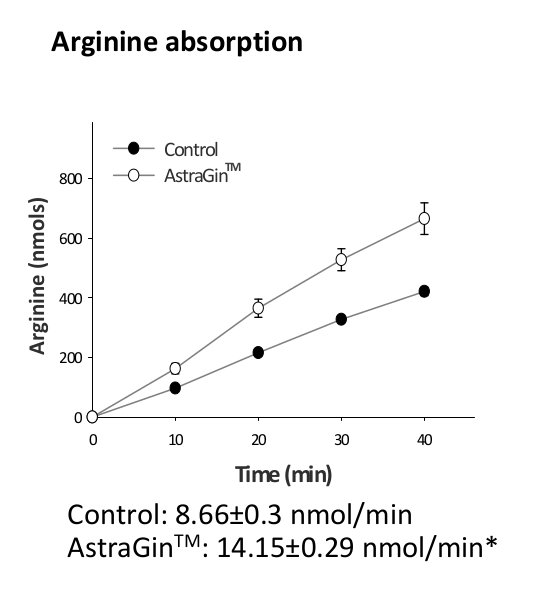
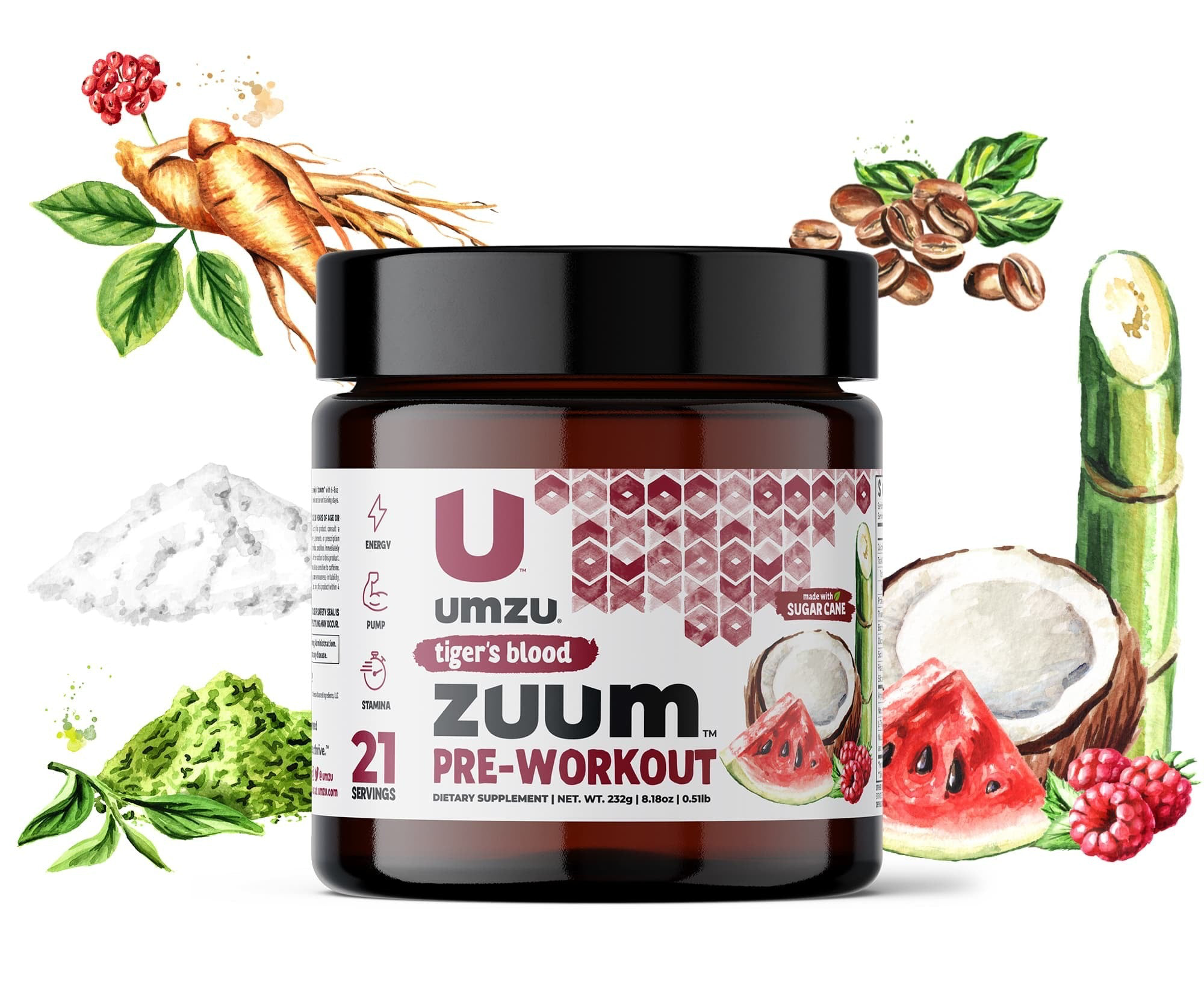


Comments and Discussion (Powered by the PricePlow Forum)